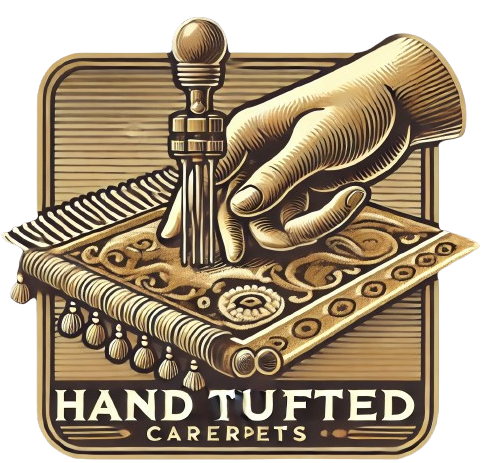Blog

Sustainable Luxury: Exploring the Eco-Friendly Aspects of Hand-Tufted Carpets
In the realm of interior design, the term “luxury” often conjures images of opulence and extravagance. However, in recent years, there has been a significant shift towards sustainable luxury – a concept that prioritizes ethical production practices, environmental consciousness, and high-quality craftsmanship. Hand-tufted carpets exemplify this evolving trend, combining timeless elegance with eco-friendly principles to create sustainable luxury floor coverings that adorn homes and spaces with both beauty and conscience.
At the heart of the sustainability narrative surrounding hand-tufted carpets lies the choice of materials. Unlike their machine-made counterparts, which often rely on synthetic fibers derived from petrochemicals, hand-tufted carpets predominantly utilize natural and renewable resources. Wool, sourced from sheep, is one of the most common materials employed in hand-tufted carpet production. Not only is wool biodegradable and recyclable, but it also boasts inherent properties such as durability, stain resistance, and flame retardance, reducing the need for chemical treatments and enhancing the longevity of the carpet.
Moreover, the process of hand-tufting itself aligns with sustainable principles. Unlike traditional hand-knotting, which requires a skilled artisan to tie each individual knot by hand, hand-tufting involves the use of a handheld tufting gun to push yarn through a backing material, creating a loop or cut pile. While hand-tufting still requires craftsmanship and expertise, it is generally less labor-intensive and time-consuming than hand-knotting, making it a more cost-effective option without compromising on quality.
In addition to wool, other eco-friendly fibers such as silk, bamboo, and organic cotton may also be incorporated into hand-tufted carpets, further diversifying the range of sustainable options available to consumers. These natural fibers not only minimize the environmental impact of carpet production but also offer unique textures, sheens, and color variations, adding depth and character to the finished product.
Beyond the materials themselves, the ethos of sustainability extends to the production process and supply chain associated with hand-tufted carpets. Many manufacturers prioritize fair labor practices and ethical working conditions, ensuring that artisans receive fair wages and opportunities for skill development. By supporting local communities and preserving traditional craftsmanship, hand-tufted carpet production becomes not only a means of livelihood but also a vehicle for social empowerment and cultural preservation.
Furthermore, the durability and longevity of hand-tufted carpets contribute to their sustainability credentials. Unlike mass-produced, disposable goods that contribute to the cycle of consumerism and waste, hand-tufted carpets are designed to withstand the test of time. With proper care and maintenance, they can last for decades, reducing the need for frequent replacements and minimizing landfill waste.
From a consumer perspective, investing in hand-tufted carpets aligns with the principles of conscious consumption and responsible stewardship of resources. By choosing sustainable luxury options, individuals can create living spaces that reflect their values and priorities, while also making a positive impact on the environment and society.


